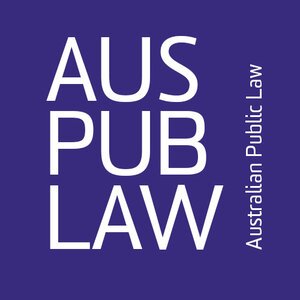
Index
- July 2025 2
- June 2025 1
- May 2025 2
- March 2025 2
- February 2025 2
- January 2025 1
- November 2024 5
- October 2024 2
- August 2024 3
- July 2024 2
- June 2024 4
- May 2024 1
- April 2024 5
- March 2024 5
- February 2024 4
- January 2024 2
- December 2023 5
- November 2023 7
- October 2023 4
- September 2023 5
- August 2023 3
- July 2023 5
- June 2023 3
- May 2023 5
- April 2023 3
- March 2023 5
- February 2023 9
- December 2022 9
- November 2022 3
- October 2022 7
- September 2022 4
- August 2022 8
- July 2022 3
- June 2022 4
- May 2022 9
- April 2022 7
- March 2022 2
- February 2022 5
- December 2021 7
- November 2021 12
- October 2021 9
- September 2021 14
- August 2021 9
- July 2021 5
- June 2021 9
- May 2021 4
- April 2021 3
- March 2021 13
- February 2021 7
- December 2020 1
- November 2020 4
- October 2020 4
- September 2020 5
- August 2020 5
- July 2020 8
- June 2020 5
- May 2020 11
- April 2020 6
- March 2020 5
- February 2020 3
- January 2020 1
- December 2019 1
- November 2019 3
- October 2019 2
- September 2019 2
- August 2019 4
- July 2019 2
- June 2019 2
- May 2019 5
- April 2019 8
- March 2019 2
- February 2019 3
- December 2018 1
- November 2018 9
- October 2018 2
- September 2018 5
- August 2018 3
- July 2018 3
- June 2018 2
- May 2018 5
- April 2018 7
- March 2018 3
- February 2018 4
- December 2017 3
- November 2017 7
- October 2017 4
- September 2017 3
- August 2017 3
- July 2017 1
- June 2017 3
- May 2017 2
- April 2017 3
- March 2017 4
- February 2017 3
- January 2017 1
- December 2016 3
- November 2016 4
- October 2016 2
- September 2016 1
- August 2016 3
- July 2016 1
- June 2016 3
- May 2016 3
- April 2016 4
- March 2016 4
- February 2016 3
- January 2016 1
- December 2015 2
- November 2015 4
- October 2015 4
- September 2015 4
- August 2015 3
- July 2015 6
- June 2015 6
Could For Women Scotland Impact How Australian Courts Understand What ‘Women’ Means?
Nina Dillon Britton
On 16 April 2025, in a unanimous decision, the UK Supreme Court found that, for the purposes of the Equality Act 2010 (UK), ‘sex’ means one’s biological sex at birth and ‘women’ means only people who were female sex at birth: For Women Scotland Ltd v The Scottish Ministers [2025] UKSC 16. The Court rejected the Scottish Ministers’ contention that transgender women with gender recognition certificates were ‘women’ for the purposes of the Equality Act (as well as the corollary, that ‘men’ included transgender men with such certificates). The effects of the Supreme Court’s decision will be deeply felt by transgender people in the UK, and the judgment will no doubt be subject to significant critical analysis.
This blog post concerns the question of whether the ruling in For Women Scotland has relevance in Australia, and particularly whether it might influence Australian courts in interpreting the Sex Discrimination Act 1984 (Cth)—the rough federal equivalent to the Equality Act. The issue is a live one. Last year, the construction of the words ‘woman’ and ‘sex’ were considered in the context of a gender identity discrimination claim brought by a transgender woman against an app marketed as ‘female-only’: Tickle v Giggle for Girls Pty Ltd (No 2) [2024] FCA 960 (Tickle v Giggle (No 2)). The Federal Court’s conclusion that ‘sex’ (in its ordinary meaning) was changeable, and thus that the complainant’s discrimination claim was successful, is currently under appeal. Similar questions of construction have also been raised in a decision by the Administrative Review Tribunal to uphold a decision by the Australian Human Rights Commission not to grant an exemption to a lesbian group, which sought to hold events that would exclude transgender women: Lesbian Action Group and Australian Human Rights Commission [2025] ARTA 34. That decision is currently the subject of a judicial review application in the Federal Court.
Beyond the Border: CZA19 Across The Indian Ocean
Douglas McDonald-Norman
In its recent judgment in CZA19 v Commonwealth; DBD24 v Minister for Immigration and Multicultural Affairs [2025] HCA 8(CZA19), the High Court has confirmed that a non-citizen may be detained for the purpose of receiving, investigating and determining their application for a visa. This is an important clarification and restatement of the principles articulated by the Court in NZYQ v Minister for Immigration, Citizenship and Multicultural Affairs [2023] HCA 37 (NZYQ). (For an explanation of those principles, see Sangeetha Pillai and Laura John, Josephine Langbien and Sanmati Verma for AUSPUBLAW.)
Across the ocean, in the Indian state of Assam, Rajendra Das was stripped of his Indian citizenship by a Foreigners Tribunal. This is part of a harsh and demanding process which, in conjunction with the compilation of a National Register of Citizens (NRC), has deprived nearly two million residents of Assam of citizenship where they have been unable to prove (through documentary evidence) that they or their ancestors lived in India before March 1971. In some cases, people have been deprived of citizenship based on minor inconsistencies within their identity documents – often simple matters of spelling or transliteration.
The Global South Critique of Liberal Constitutionalism
Theunis Roux
There have been two significant developments in comparative constitutional studies over the last decade. First, the rise of authoritarian populism in Europe and the Americas has produced an outpouring of literature on the causes of this phenomenon and what can be done to protect constitutional democracies against it. Second, after a long and mysterious delay, the Global South critique has finally arrived in the field – hauling it kicking and screaming into, not quite the twenty-first century, rather something more like the 1980s in the humanities after Edward Said’s intervention – with a lot of ground still to make up.
The What, Where and How of Comparative Constitutional Law, after the ‘Southern Turn’
Ben Schonthal
I fear this piece will be both less and more than what is asked for.
It will be less in that I do not consider myself an expert on Global South constitutionalism, but only an observer of one slice of it: the constitutional systems of South and Southeast Asia. And my true expertise is even narrower than that. My research explores what happens when national constitutions confront another major source of normativity in nation-states: the one that Hirschl and Shachar have called the ‘rival’ to constitutional law, namely religion.
My comments may be more than what’s asked for in that I tend to take a wider view of comparative constitutional law than is typical at public law conferences. I am a social scientist who writes about people and topics that don’t always find their way onto the pages of the International Journal of Constitutional Law. Yes, I consider the work of judges, lawmakers and national constitutions. But I also think about Buddhist monks, protest leaders and firewalkers. For me, they are also constitutional actors—or so I hope to persuade you.
So I offer these comments with humility.
Legislation in the contemporary administrative state: an Australian perspective on Loper Bright
Lisa Burton Crawford
Recent decisions of the United States Supreme Court (SCOTUS) seem to have thrown the administrative state into crisis. A suite of recent cases have limited executive power in important ways—for example, by requiring executive action to be authorised by far more detailed legislation than has previously been required, or preventing executive agencies from performing certain functions that they have been allowed to in the past. These include the momentous decision in Loper Bright Enterprises v Raimondo, 603 US ___ (2024) — in which the SCOTUS effectively overturned the doctrine of Chevron deference.
Why should Australian public lawyers be interested in these developments? What light do they cast on our own legal system, and its particular strengths and pathologies? This post explores these issues, beginning with the complex legislative framework that sustains administrative government here.
The US Supreme Court overrules Chevron
Harry Sanderson
A majority of the United States Supreme Court in June abolished Chevron deference—a doctrine which had been a cornerstone of US administrative law for 40 years. The decision was long-anticipated, but is likely to be divisive. This post explains the Court’s reasoning in Loper Bright Enterprises v Raimondo, 603 US ___ (2024) and some of its possible implications for US and Australian administrative law.
What does the US Supreme Court’s decision in Dobbs tell us about the virtues of Australia’s approach to protecting fundamental rights?
Theunis Roux
Australia is one of the few liberal democracies today without a judicially enforced bill of rights in its national constitution. Instead, the protection of rights is largely left to the democratic process. What does the US Supreme Court’s recent decision on the right to abortion in Dobbs v Jackson Women’s Health Organization 597 US ___ (2022) tell us about the virtues of this approach?
The Global South and liberal constitutionalism: incommensurable opposites?
Theunis Roux
Philipp Dann, Michael Riegner and Maxim Bönnemann’s edited collection of essays on The Global South and Comparative Constitutional Law constitutes a major advance in scholarly thinking on this topic. Theorising the Global South as an ‘epistemic, methodological and institutional sensibility’ (p. 3), Dann and his co-editors persuasively show …







